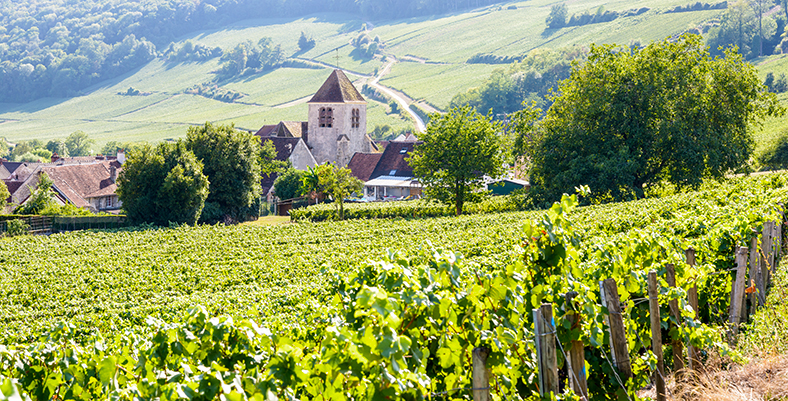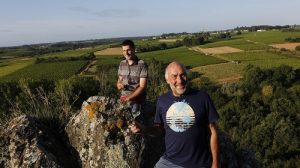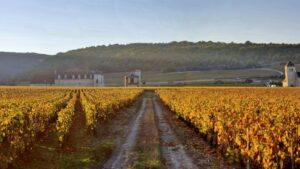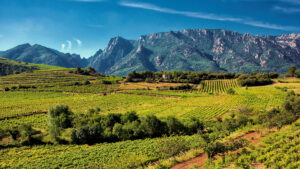
Home to the world’s most famous fizz, Champagne is a region that basks in the brilliant light of its prestige and global renown. Quite right, too. It is steeped in history and proud of its particularities, continuing to fulfil a legendary role in the world of wine. What is there to know about this viticultural giant, then, and what secrets lie in its soil?
What does it look like?
Vines have been growing in the north-eastern region of Champagne since the first century, with 34,000 hectares spread across the sub-regions of Marne, Aube, Aisne, and Seine-et-Marne. The official Champagne appellation (AOC) came into being in 1927 and includes 319 crus throughout 280,000 parcels. Aside from these, there are 42 premiers crus and 17 grands crus.
The climate in Champagne is typical of a northern wine region, with an average temperature of 11°C and a double influence from both the ocean and the continent. The former brings rain with cool summers and mild winters, and the latter a good level of sun, though the main drawback is the potential for frost in the spring months. The champenois sub-soil is made up of mainly of chalk, and the vines are planted on slopes to aid water drainage.
Four key areas
In the north of Champagne we find the Montagne de Reims, which is itself cut into five zones (Eceuil, Chigny-les-Roses, Verzenay, Trépail-Nogent-l’Abbesse and Bouzy-Ambonnay). Most of the vineyards here enjoy southern exposure and the soils are rich in chalk. Pinot Noir is the dominant grape, though a few Pinot Meunier and Chardonnay vines keep them company. The Champagne crafted in this area is known for being powerful in character.
Next up is the Marne valley, to the west of Château-Thierry, where the soil is rich in clay and marl. Here, the Pinot Meunier varietal is right at home, and the Champagnes tend to be more supple and fruity with a somewhat seductive character.
Moving further south, we get to the Côte des Blancs, a kingdom over which the Chardonnay grape reigns. Much like the Montagne de Reims, the earth in this sub-region is mainly composed of chalky soil. The Champagne made here has a liveliness about it, with a lightness that doesn’t compromise on elegance.
Finally, the southernmost edge of Champagne brings us to Aube, known as the Côte des Bar, and a sub-region that long resided in the shadow of its northern neighbours. Fortunately, it has since made up some ground and can proudly count itself among the prestigious circle of its counterparts. Pinot Noir is the main varietal cultivated in the marl-rich soil of Aube, and the resulting champagnes are characterful, with round and aromatic profiles.
Beyond sparkling wine
Aside from the famous sparkling Champagne cuvées we most associate with the region, traditional red, white, and rosé wines are also crafted here. The region’s Riceys rosé is especially well-reputed, and still wines under the Coteaux Champenois appellation can reach a real level of excellence. Bollinger’s La Côte aux Enfants cuvée is a beautiful example.
Grapes
Chardonnay, Pinot Noir, and Pinot Meunier are the most widely cultivated grape varietals in Champagne, covering 29%, 39% and 32% of the planted surface area respectively. There are also some minority varietals used for crafting more experimental or specialist cuvées: Arbane, Petit Meslier, Pinot Blanc, and Pinot Gris, all of which are permitted in the appellation. You can read more about these grapes in one of our recent articles.
Houses, cooperatives, growers
Most wine regions tend to lean more towards one type of production, but Champagne is pretty well shared between independent growers, cooperatives, and houses. The first of these – the independent growers – cultivate and vinify their own grapes, later selling the wine under their chosen name. Cooperatives, on the other hand, bring together the harvests of several growers to make wine that is sold collectively. As for the Champagne houses, they vinify and sell wine made using grapes bought from vintners, though they often own some of the vineyards themselves. In other regions, domains that buy their grapes from elsewhere tend to have a lower reputation that those that cultivate and vinify their own fruit. Champagne houses don’t suffer from this kind of criticism though, as they are known for being exceedingly selective in their choice of grapes and produce highly prestigious cuvées.
Unique vinification
Tradition is at the heart of crafting Champagne, with vintners using the méthode champenoise as a foundation for creating a magical drink. Legend has it that Dom Pérignon, a 17th century Benedictine monk, was the brains behind the creation of our beloved bubbly, although the truth is likely a bit more complicated. Historians haven’t had much precise luck in their search for the origins of Champagne. Some have even posited that the sparkling wine invented itself, effervescence being a natural phenomenon; during fermentation, as yeast turns sugar into alcohol, carbon dioxide is produced. This natural fizziness is intensified by putting the wine straight into glass bottles instead of casks, where a second fermentation occurs.
In concrete terms, the traditional Champagne method involves making a still wine that is then blended with others. Sometimes, the blend will include reserve wines from previous vintages, which is why many Champagnes don’t have a specific vintage year; these are known as BSA Champagnes, which stands for brut sans année. Once the still wine is made, it is immediately bottled with a liqueur de tirage, or drawing liqueur, which is a mix of sugar, yeasts, and old wine. This sets off a second fermentation, producing the CO2 that gives the wine its sparkle. Next comes the ageing, at least 15 months for BSA cuvées and three years for vintage Champagne. The bottles then have to be undergo ‘riddling’ or ‘remuage’, meaning that they are placed on a rack facing downwards and gradually (over a period of weeks or months) rotated to a vertical position. This causes the yeasts from the second fermentation to accumulate in the bottle neck, making them easier to remove. Finally, a liqueur de dosage is added, a wine with more or less sugar that will determine the Champagne’s dosage level. All that remains is to cork the bottle for a final time! And you know all about the rest…



